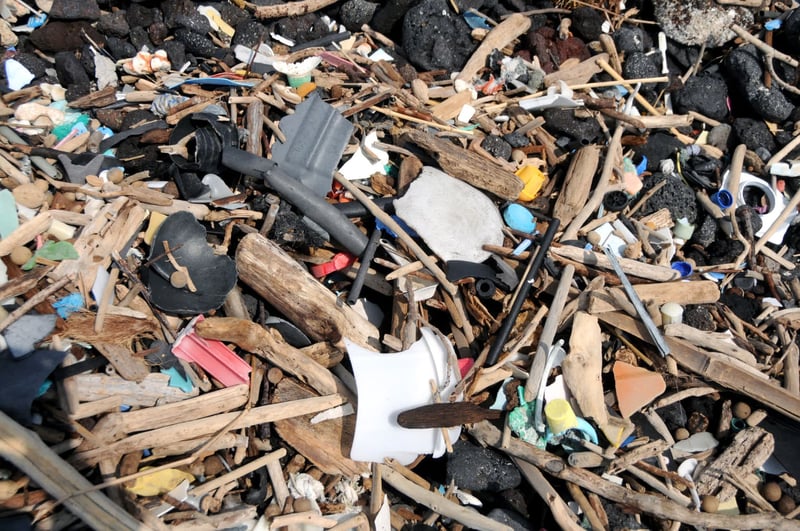
The plastic tide: does ghost gear add to the microplastics problem?
News
Plastic pollution, including ghost gear, is one of our biggest environmental problems. And it’s hurting sea animals and making them sick
Plastic debris is littering our oceans. It’s likely the plastic there today will remain for centuries.
When larger pieces of plastic degrade into smaller and smaller pieces, called microplastics, they pose a major threat to sea animals. Microplastics can also enter the oceans directly – for example, the microbeads found in some health and beauty products.
In 2014, an estimated 15 to 51 trillion microplastic particles were floating in the world’s oceans, weighing between 93,000 and 236,000 tonnes (Creesey, 2016).
Sea animals including seabirds, dolphins, fish and crabs often ingest microplastics because of their small size. Concerns about the health effects of microplastics on animals are growing. Plastics contain toxic chemicals, which can increase risk of disease, reduce feeding activity and affect reproduction in the animals who ingest them.
Is there a connection with ghost gear?
World Animal Protection works to combat the threat of ‘ghost gear’ – lost or abandoned fishing nets that can entangle and kill whales, dolphins, turtles, seals and other sea animals. In 2009 it was estimated that at least 640,000 tonnes of ghost gear enters our oceans annually – imagine what that number must be now?
Using forensic techniques, small particles of fishing ropes and mesh have been found in the stomachs of crabs and scampi.
It’s logical to assume that as the volume of ghost gear entering the oceans increases, so too will the volume of microplastics. But we urgently need further research to understand ghost gear as a contributor to the microplastics problem.
The plastic food chain
Aside from the consequences for animal health, microplastics could also impact human health. People who eat seafood may end up ingesting the microplastic particles ingested by the fish they are eating. It’s likely when someone eats a portion of mussels, for example, they may inadvertently consume 90 plastic particles (Van Cauwenberghe and Janssen, 2014).
We need more research to be able to definitively say how harmful microplastics are to humans. But it’s certainly food for thought.
World Animal Protection works to combat the threat of ‘ghost gear’ – lost or abandoned fishing nets that can entangle and kill whales, dolphins, turtles, seals and other sea animals.